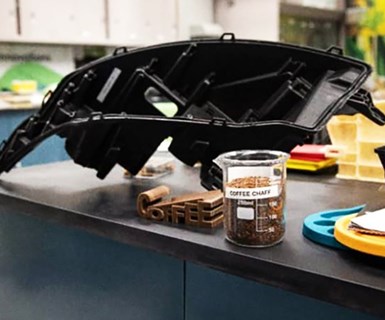Ford Puts McDonald’s Coffee to Use in Car Parts
Ford Motor Co. plans to begin using composite materials derived from coffee remnants supplied by fast food giant McDonald’s Corp. in future vehicle parts to reduce weight and enhance sustainability.
Ford Motor Co. plans to begin using composite materials derived from coffee remnants supplied by fast food giant McDonald’s Corp. in future vehicle parts to reduce weight and enhance sustainability.

The partners discovered that coffee chafe—the dried skin of the bean extracted during the roasting process—can be converted into a durable material to reinforce headlight assemblies and other components. Roasting in a low-oxygen environment and then pelletizing the chaff with plastic and other additives allows the material to be formed into various shapes.
Ford says the material can reduce part weight by as much as 20% and requires about 25% less energy during the molding process. Heat properties of the chaff components are significantly better than those made with other materials. In some cases, coffee-sourced parts outperform traditional materials.
Among the first applications for the material will be in the headlight housings of the Mustang pony car and Lincoln Continental sedan. Plymouth, Mich.-based Varroc Lighting Systems Inc., which supplies the headlamps, and Competitive Green Technologies will process the coffee chaff.
Ford plans to expand use to other vehicles and components, including interior systems and underhood parts.
RELATED CONTENT
-
Cobots: 14 Things You Need to Know
What jobs do cobots do well? How is a cobot programmed? What’s the ROI? We asked these questions and more to four of the leading suppliers of cobots.
-
On Automotive: An All Electric Edition
A look at electric vehicle-related developments, from new products to recycling old batteries.
-
TRW Multi-Axis Acceleration Sensors Developed
Admittedly, this appears to be nothing more than a plastic molded part with an inserted bolt-shaped metal component.








